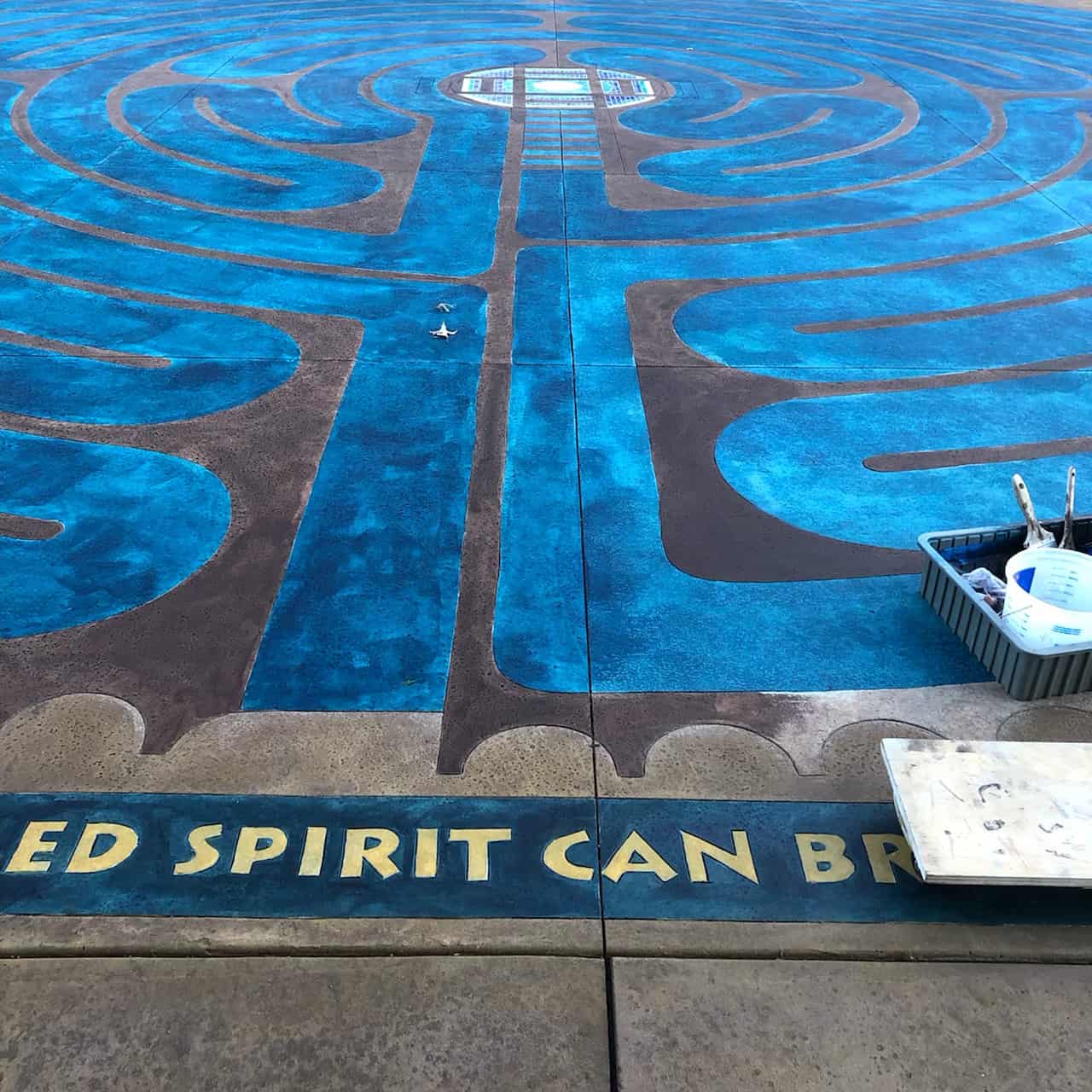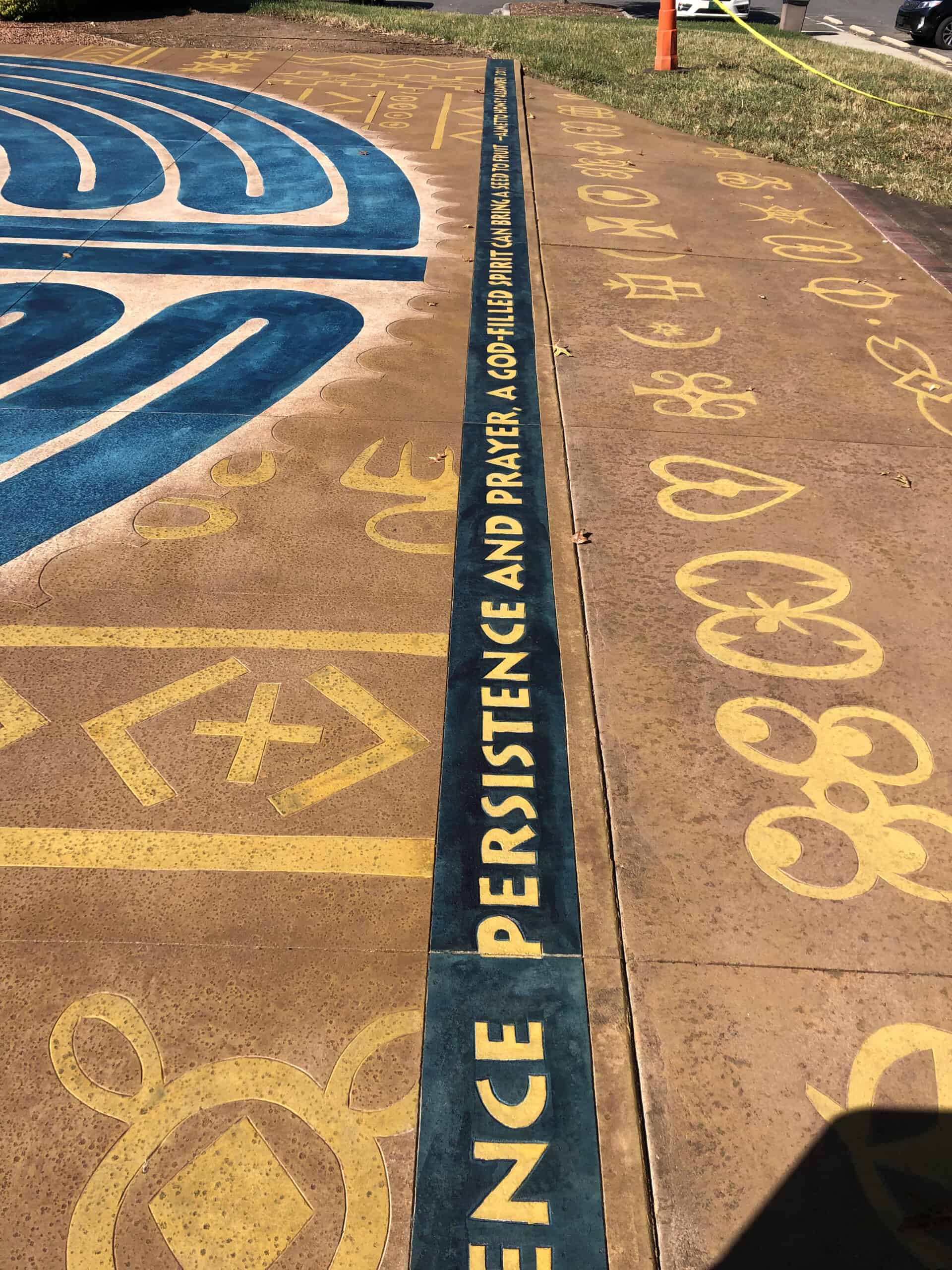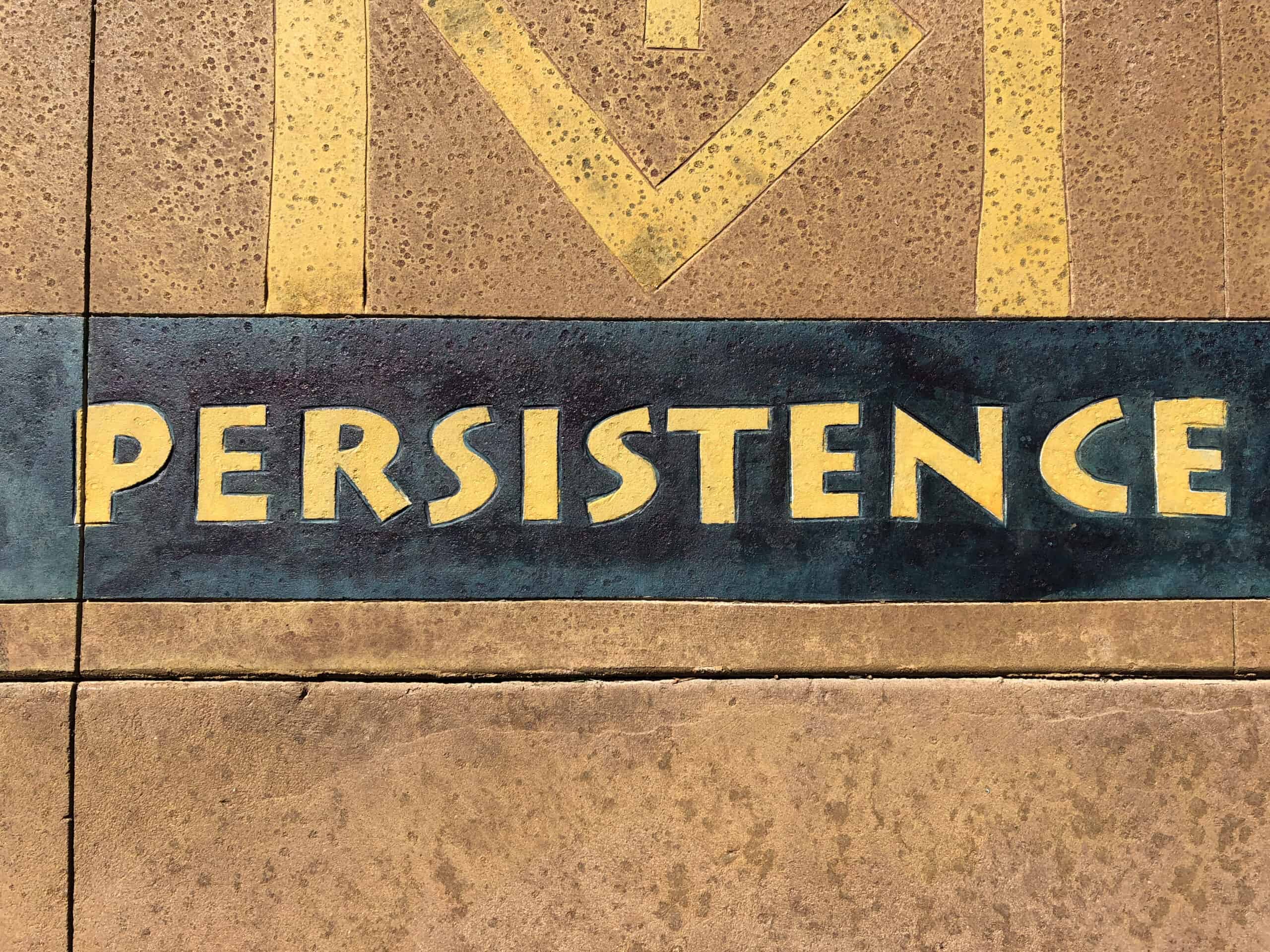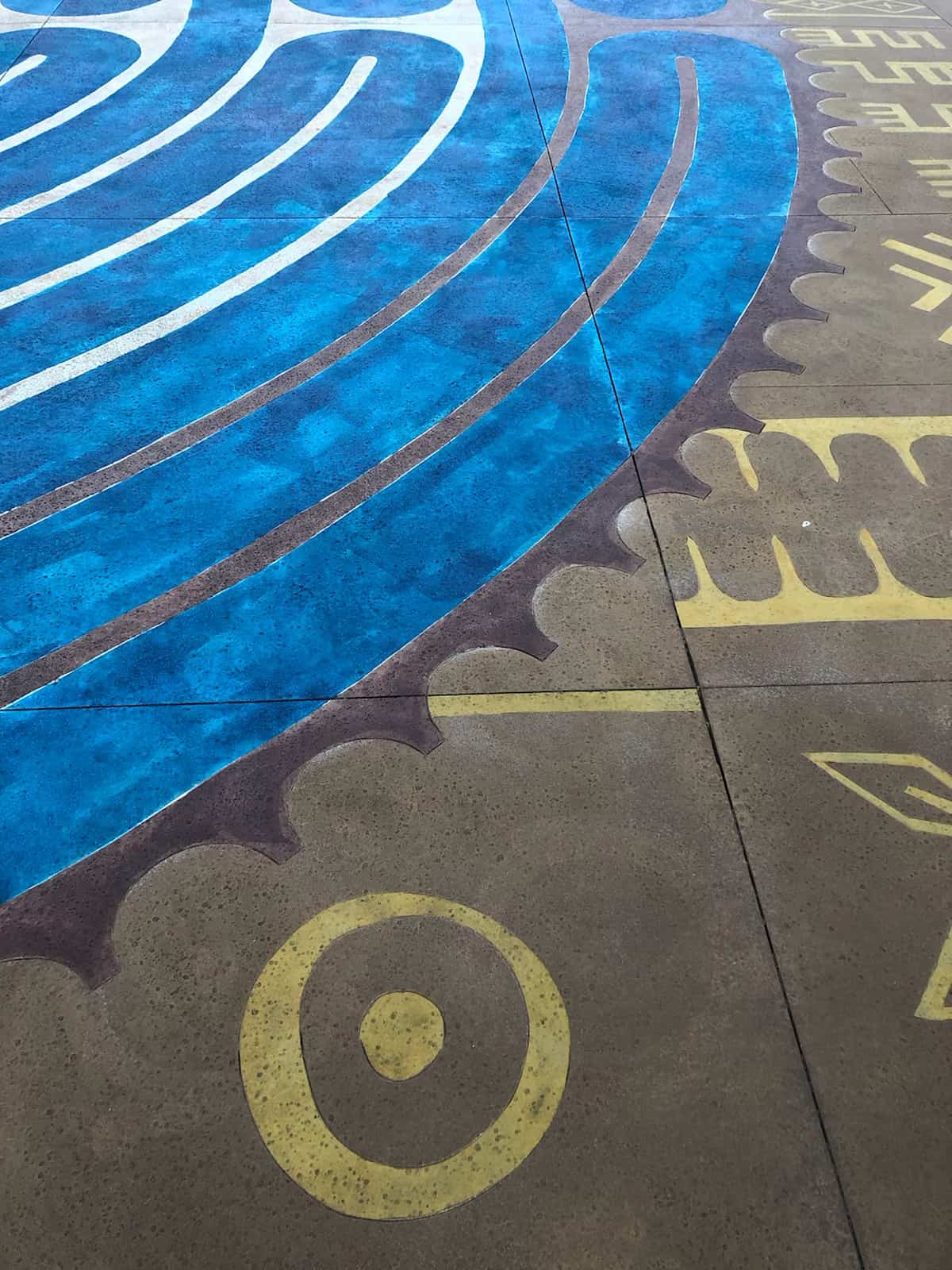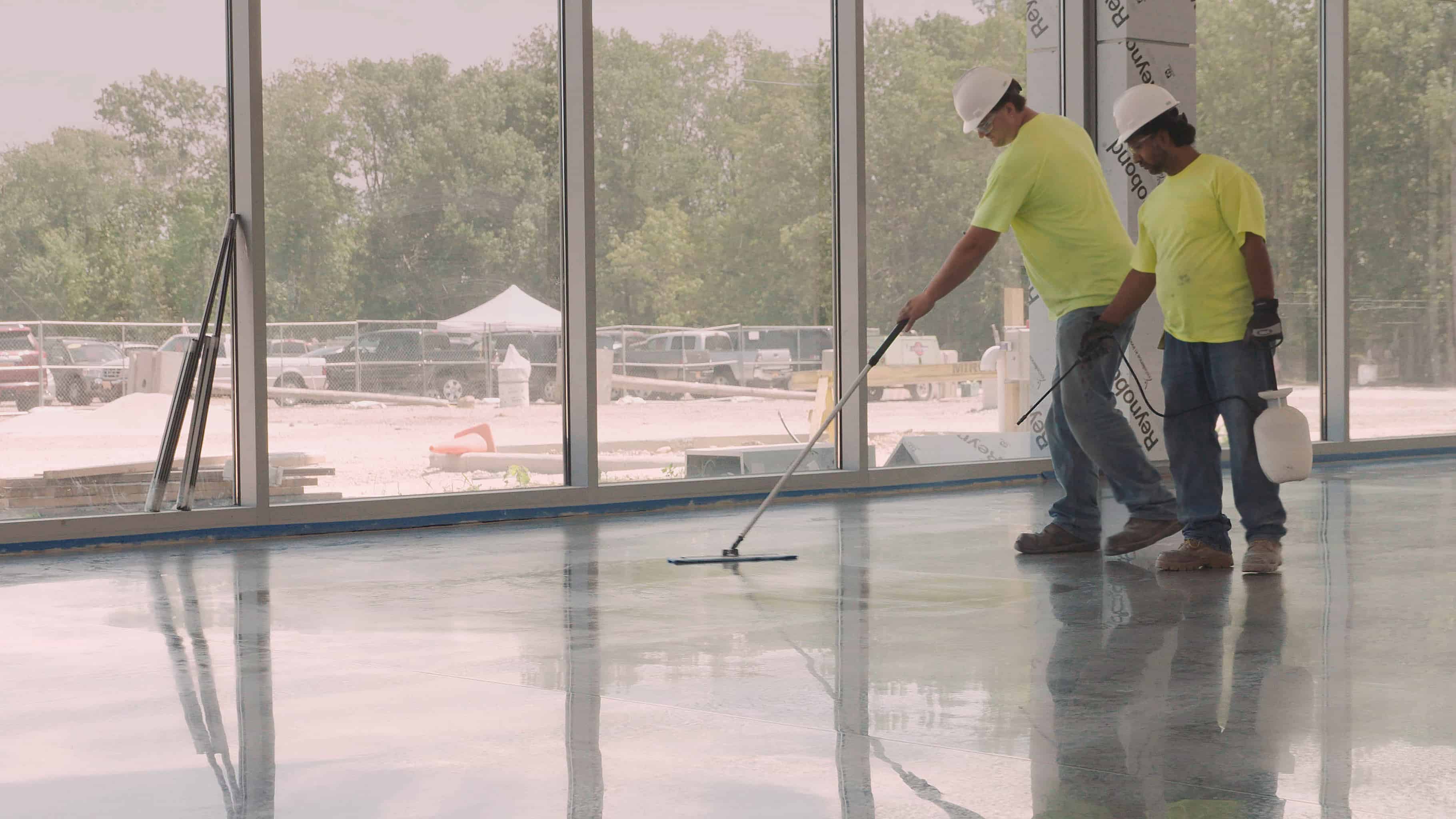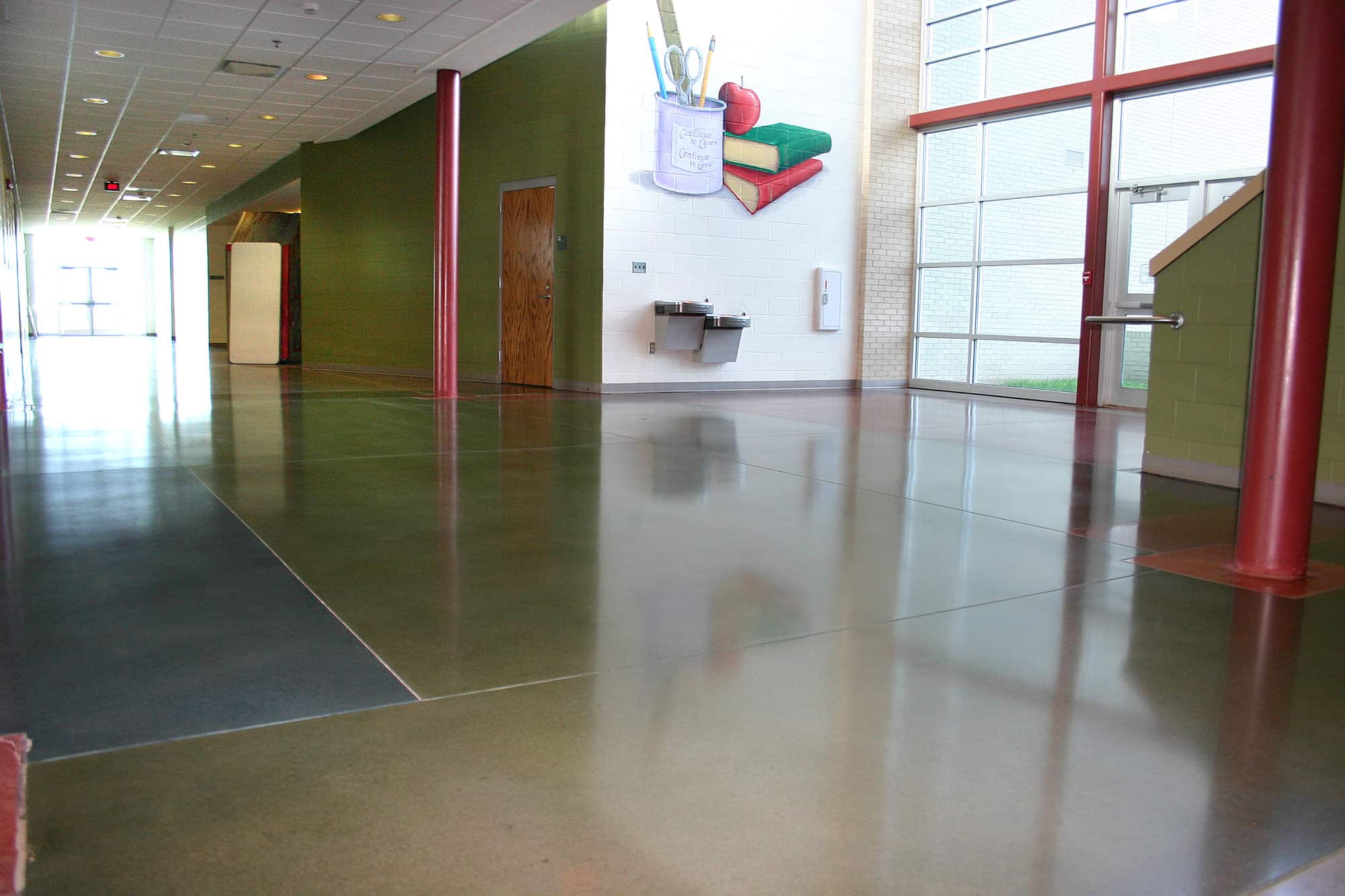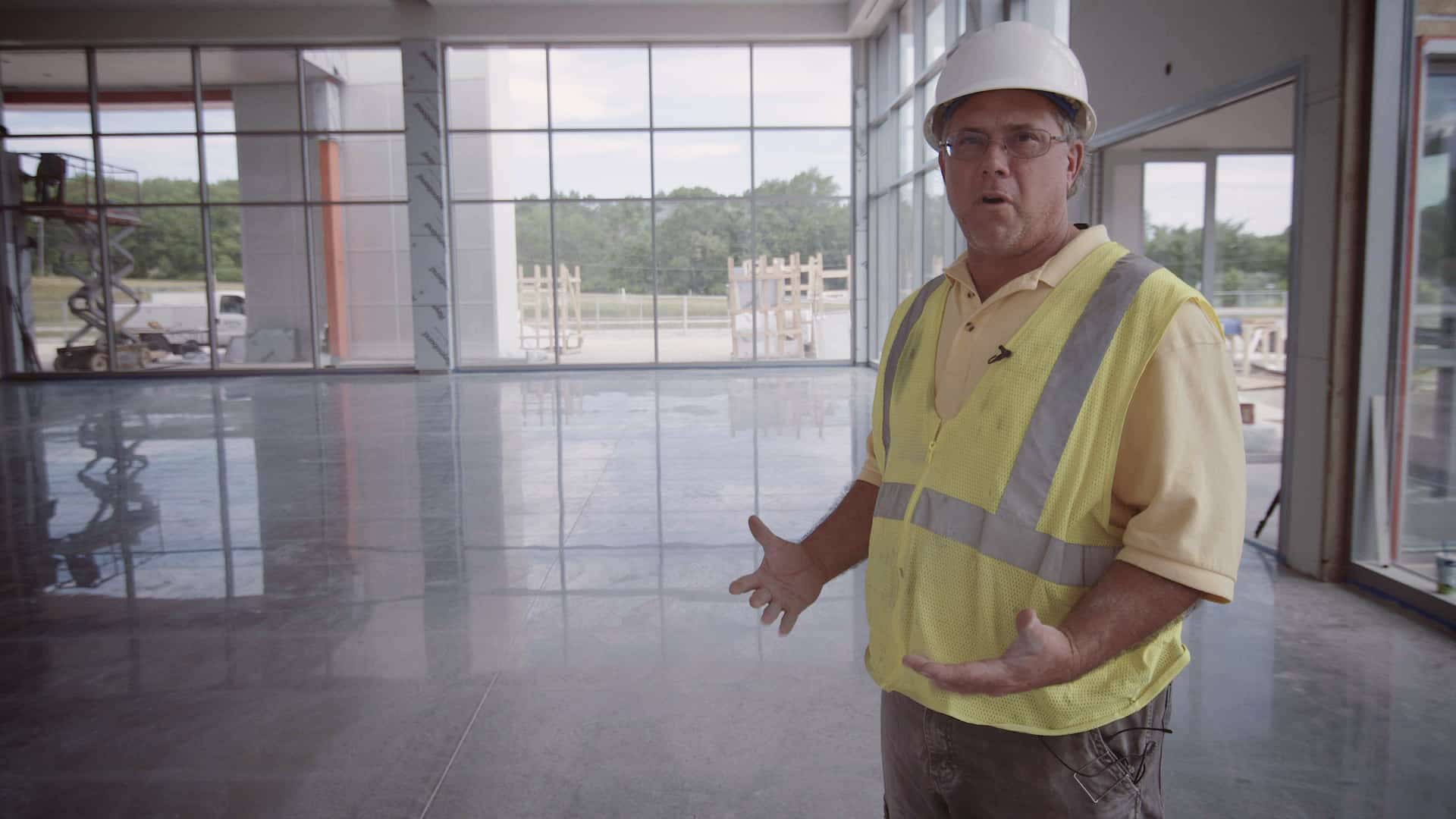Step-by-step account of how one concrete artist revived the vibrant colors of an historic outdoor labyrinth in Charlotte, N.C.
Ten years in the harsh Charlotte, N.C., sun will really do a number to exterior decorated concrete. It sure faded the exquisite labyrinth design installed outside of the McCrory YMCA in Charlotte, officially called the Almetto Howey Alexander Labyrinth.
The nation’s first Afro-Centric labyrinth, it was originally designed through a partnership between lifelong community activist Almetto Howey Alexander, nationally recognized labyrinth artist Tom Schulz, the YMCA and surrounding community. This labyrinth features carefully curated colors, symbols and phrases that have made it a spiritual focal point of North Charlotte since 2011.
Over the years, the vibrant colors of the labyrinth design had faded dramatically, and when Daniel de Wit arrived on the scene to revitalize the labyrinth as part of an 85-year anniversary of the YMCA, he realized the extent of the job would involve much more than colors.
“There were seven millimeters of acrylic buildup,” he said. “The sealer had broken down so much that it lost its sheen and water repellency, but it was still really saturating the surface.”

His step-by-step process
A job like this for de Wit, founder of Climate City Construction, would typically begin with surface prep -- stripping the acrylic off the concrete to establish a clean base. But in this case, he was worried about losing the intricate edges and lines of the labyrinth design. So, he began with a time-consuming exercise of outlining each design detail with a 4.5-inch angle grinder.

“It took about 14 hours of angle-grinding,” de Wit said. “It was quite the process.”

“I had to work at night because the Cure & Seal would evaporate in the hot sun,” he said. “This was an attempt to remove the bulk of the plastic residue on the surface so the chemical stripper could work on the deeper acrylic that penetrated the really porous surface,” he said.

Using a combination of sprayers, brushes and rollers, de Wit added PROSOCO’s ColorHard colors to Consolideck LS, a chemical densifier and hardener designed for both interior and exterior concrete surfaces.
Finally, de Wit applied two coats of GuardEXT to seal the concrete in the middle of the night. He believes the revitalization may not have been possible had he been hired for the work even a couple years later.
“The slab was very porous,” he said. “It was right at the edge of spalling and some of the aggregate and sand was exposed on the surface, so if it had been a few more years, the revitalization probably wouldn’t have worked. I’m happy I was able to get in there during a sweet spot in time when it was still possible.”
![]()
